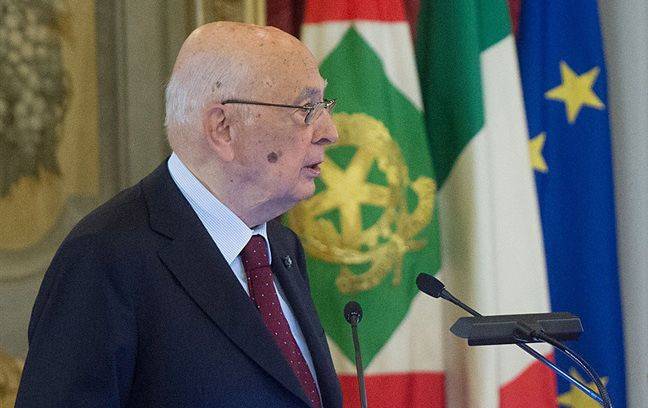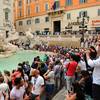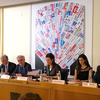President Napolitano Testifies Before Palermo Court
ROME – The full text about a presumed swap between the Italian powers-that-be and the Sicilian Mafia back in the Nineties is yet to be released. But already President Giorgio Napolitano’s three-hour testimony Oct. 28 before a Palermo court, transferred inside the Quirinal Palace in Rome, confirmed that the Sicilian Mafia had indeed tried to blackmail the Italian government. Because of his office, Napolitano, 89, was not obliged to answer the questions put to him by five prosecutors and by lawyers for the defense, but elected to do so. In so doing, the President offered an admirable image of democracy at work, while also requesting that the full text of the hearing, held behind closed doors, be released to the public “within a few days.”
The issue at stake is particularly nasty. Following a state crackdown on prison conditions for convicted Mafiosi, a rash of Mafia-style crimes began. Twenty-one murders took place, among them of Sicilian Mafia investigators Giovanni Falcone and Paolo Borsellino in Palermo. Targeted bombings included of an ancient church in Rome and in a location abutting the Uffizi Museum in Florence. The end of the campaign of violence was seen by some to coincide with a softening of the particularly harsh prison regime for some 300 convicted Mafiosi in 1993, with the result that a link between the two was suspected. The swap theory gained sufficient credence that Nicola Mancino, at the time Interior Minister, came under prosecution for perjury in denying that he had knowledge of negotiations between Cosa Nostra and the state.
A recently discovered Italian intelligence dispatch dated Aug. 20, 1993, entitled “Servizio per le informazioni e la sicurezza democratica” (Information and Democratic Security Service) lends credence to the idea that a swap was at least proposed by Cosa Nostra, headed at that time by Salvatore (Toto’) Riina. According to this report, “At this point the Mafiosi are certain they will spend the rest of their lives sentenced to harsh detentions that can no longer be annulled by a high court, and under a rigid prison regime, far different from that to which they were accustomed until only recently.
“They have thus come to the conclusion that only institutional chaos, brought about by the rebellion of a civil society worn down by terrorizing bombings, [and] possibly further exacerbated by subsequent coup-style events, can obtain for them a new form of negotiations aimed at notably reducing their imprisonment ….” That is, in this report of 1993, found in the files of a deceased judge, does not confirm that a swap existed, but does point out explicitly that the threat of an (otherwise unexplained) coup d’etat also existed behind the bombings and murders. (According to the press agency ANSA, “Sources present at the hearing” said Napolitano had testified that he and the then premier Carlo Azeglio Ciampi both feared that such a coup was a serious risk.
Two years ago it was learned that Mancino, suspected of having authorized the swap, had been in contact by telephone four times with Napolitano, who was at that time president of the lower house, the Chamber of Deputies. The Palermo investigators therefore asked for Napolitano to testify. In another important detail, it has emerged that Napolitano himself was a possible Mafia target. Complicating matters was that his close advisor Loris D’Ambrosio may have been a go-between for Mancino with Napolitano. However, when D’Ambrosio himself was put under investigation in 2012, he suffered a heart attack and died before he could be questioned. In what is known from lawyers so far about his deposition, Napolitano said that if D’Ambrosio, who was well known for his rectitude, had genuine suspicions about irregularities, he would have gone straight to magistrates.
The first to have spoken of an swap State-Mafia was Giovanni Brusca, so-called “repentent” Mafioso, back in 1996. The investigation was opened in 2008 following further allegations by another “pentito,” Massimo Ciancimino. Initially Napolitano appeared reluctant to testify, but then agreed to full cooperation. In Tuesday’s hearings inside the Quirinal Palace, which is the President’s official residence in Rome, the lawyers representing the convicted Mafia boss Riina were among those present and, after a lengthy previous debate, were allowed to ask the President direct questions.
But not only Napolitano was at risk. As one of the prosecutors told the press this week, “This is a difficult moment for us, above all because of the nasty threats we are receiving. I want to thank the police for their efforts to protect us.”





































i-Italy
Facebook
Google+
This work may not be reproduced, in whole or in part, without prior written permission.
Questo lavoro non può essere riprodotto, in tutto o in parte, senza permesso scritto.